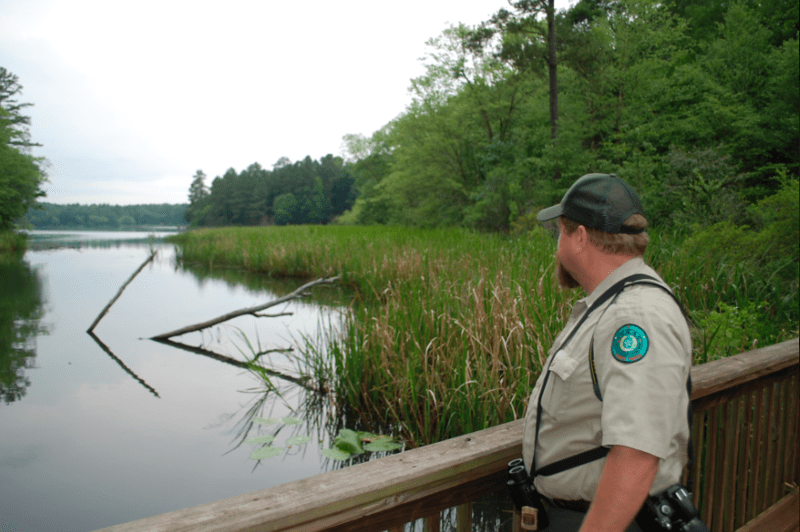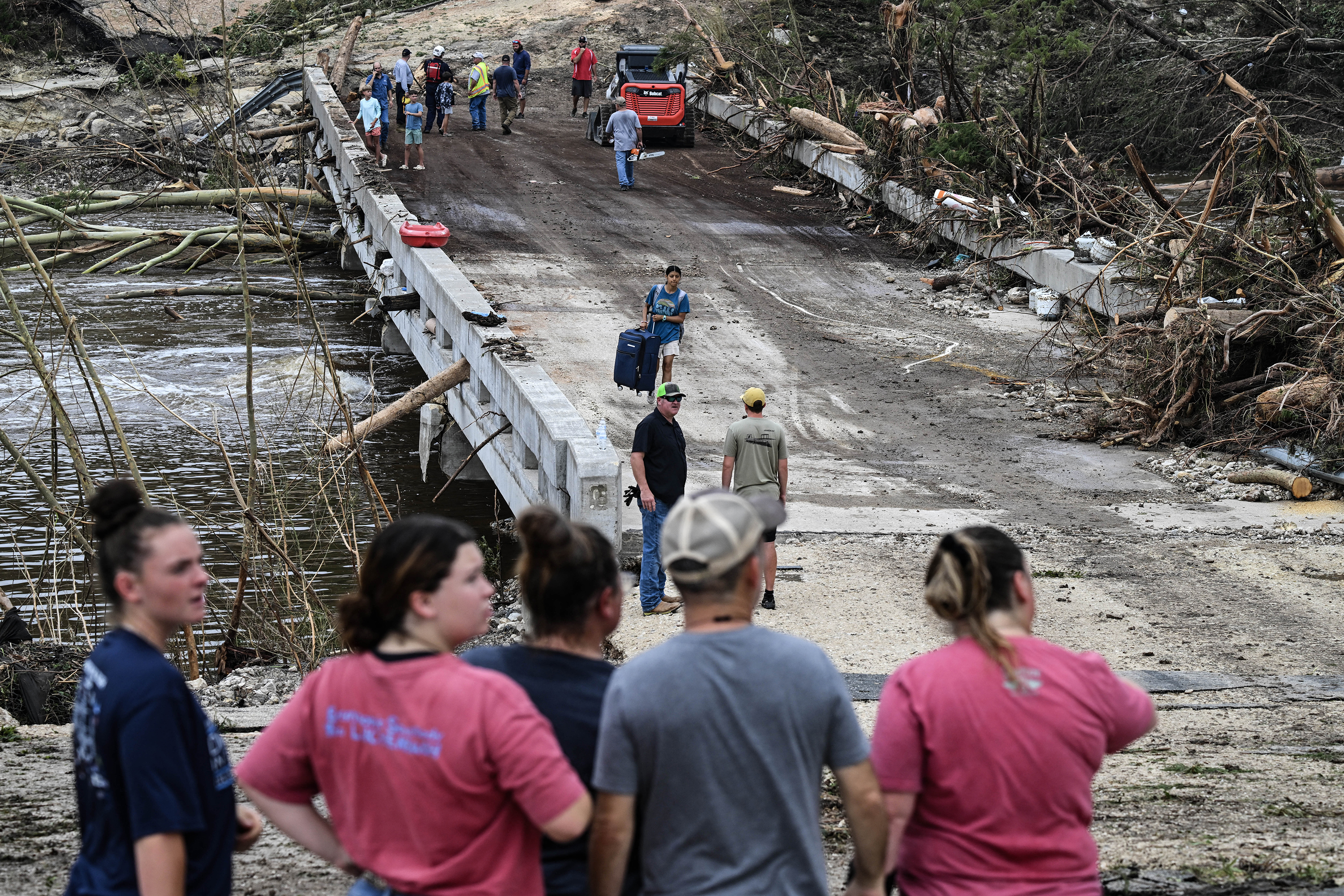Tyler State Park’s trails offer escape into nature
Published 2:24 pm Friday, July 1, 2016
DANNY MOGLE,
Only a few steps after getting on a section of the Lakeshore Trail near the swimming beach at Tyler State Park, Ranger Boyd Sanders suddenly stops and listens.
“There it goes again,” Sanders sats. “It’s that high tea kettle, tea kettle, tea kettle call.”
He is hearing the unmistakable high pitch of a Carolina wren.
Sanders grabs his binoculars and scans the tops of the oaks and loblolly pines. The little bird with light brown plumage is elusive but Sanders knows he (it is the male that makes the cry) is there by his spirited and distinctive song.
“I’ve been at this for some 30 years and I still get excited,” he says with a smile.
As a park ranger, Sanders relishes being outdoors and helping people connect with the sights and sounds of nature. With a lake, streams and natural springs as well as an abundance of plants and animals, Tyler State Park is the perfect place for him to do just that.
THE PARK
The park’s 985 acres just off Highway 14 north of Tyler were donated to the state of Texas in the early 1930s. By that time, almost all of the trees and grasses on the land had been stripped away for farming and logging.
Row after row of massive ravines had formed along the steep hills where the sandy soil was washing away. To put it kindly, the “gift” was a big, ugly mess that needed lots of work before it could be added to the state’s growing network of parks.
The state found the help it needed to transform the property in the Civilian Conservation Corps, the Depression-era federal program that put millions of men to work on public service projects. The CCC arrived in 1935. “The first job … was to restore the land to its natural state,” according to information from the Texas Parks and Wildlife Department. “They planted over 600 acres with native trees and shrubs raised in a nursery onsite.”
One of the biggest jobs was building the 835-foot earthen dam that created the 64-acre spring-fed lake in the heart of the park. CCC men, working for a mere $35 a month, also constructed roads, bridges, trails, picnic areas and several buildings – including a bath house and dance pavilion.
“When Tyler State Park officially opened in 1941, visitors marveled at the recreational opportunities the new site offered,” according to one account.
In 1963, a section of the dam washed away. The flooding caused widespread damage. The Texas Parks and Wildlife Department rebuilt the dam, repaired the damage and made improvements throughout the park.
Today, the park is one of the most heavily used in the state. It has screened-in covered shelters that can be rented, group camping areas, campsites for tents and RVs and a network of trails for hiking and mountain bike riding. At the lake, visitors can swim, fish and rent a canoe or paddleboat.
THE TRAILS
Tyler State Park is located along the convergence of two ecosystems, the pineywoods and post oak savannah. The park contains hardwood forests, a grassy savannah, brush-covered thickets and even a swamp-like beaver pond on the southeast corner of the lake.
The many types of trees, flowers and bushes create the perfect habitat for raccoons, squirrels, possums, skunks, armadillos, white-tailed deer, foxes, birds, snakes and lizards.
The best way to explore the park’s natural wonders is to traverse one of its eight trails. Some are used by both hikers and mountain-bike riders while others are designated for hikers only. Some are short and easy on flat land while others are challenging, cover several miles and have frequent and dramatic elevation changes.
The Whispering Pines Hiking Trail takes hikers to an abandoned children’s wading pool and rock waterfall. Highlights along the C Loop route include a CCC-constructed rock dam and some of the biggest pines in the park. Hikers on the Blackjack Trail pass through the grassy savannah. The three-mile B Loop features the Woodpecker Theater, a section of forest that is prime habitat for seven woodpecker species.
Sanders always advises hikers and bike riders to wear appropriate gear, use sunscreen and insect repellent, avoid exploring alone, drink plenty of water, refrain from approaching wildlife and never venture off a trail.
NATURE ENCOUNTERS
On this cool spring morning, Sanders is leading a hike on the Lakeshore Trail, the flat two-mile route that circles the lake. Among its highlights are the beaver pond, a CCC-built overlook and the park’s remaining original buildings. Some of the most breathtaking views of the lake are found along the trail.
Armed with binoculars and a camera, Sanders is on the lookout for birds.
The park has hundreds of species of birds, including migratory birds that stop while passing through. A few weeks earlier, Sanders and other bird-watching enthusiasts took part in the Great Texas Birding Classic’s Big Sit, an annual event in which teams, confined to a small area, see how many birds by sight or sound they can identify in 24 hours.
“We had 61 (species of) birds,” Sanders said. “That’s not bad but the year before we did 72.”
Spring is one of the most active times for birds in the park. “This time of year they (birds) are nesting. Right now they are very, very vocal. All around us is singing.”
Sanders hears fluttering wings and quickly pulls the binoculars up to his eyes. “That’s a Mississippi kite flying over there,” he said, pointing to the sky. “And that’s a great crested flycatcher.” Along the trail he draws attention to bark stripped from a tree by beavers and a pine tree filled with holes caused by woodpeckers.
As he crosses a footbridge, Sanders reveals that that park is home to at least three species of owl and about eight species of bat.
To entice park users to venture from their campsites into the woods, Sanders leads programs, nature walks and hikes. Some outings are all about spotting and identifying birds, while others focus on butterflies and plants. One of his more popular programs covers the basics of what to do if you get lost in the forest.
“My primary function is to get people outdoors,” Sanders said. “I want to show them a new skill and teach them a little bit about nature.”
Many visitors to Tyler State Park come from cities and rarely spend much time in nature. Sanders never tires of helping camp visitors discover the thrill of seeing animals in their habitat.
“I love it. I can’t believe I get paid for doing this.







